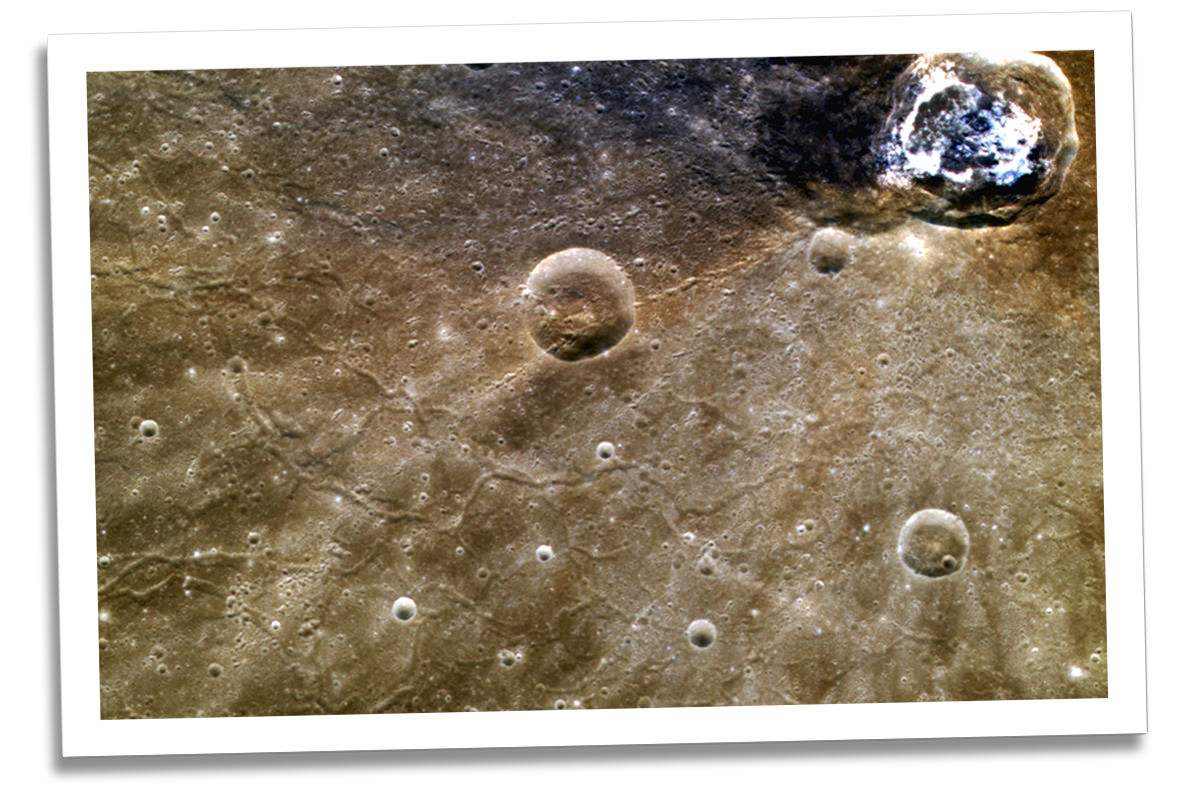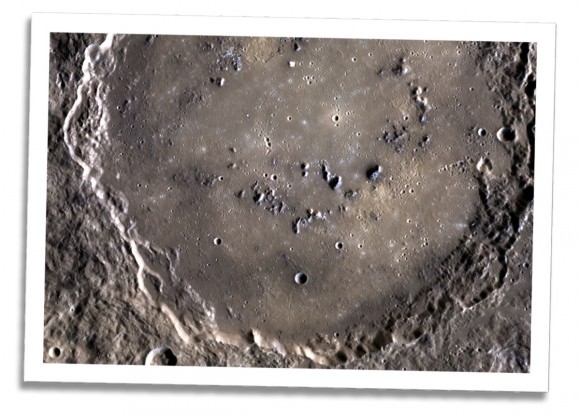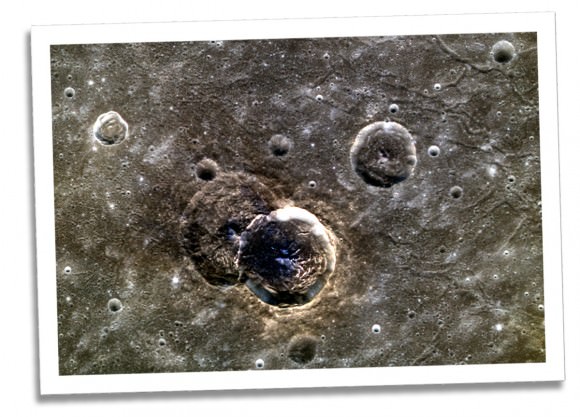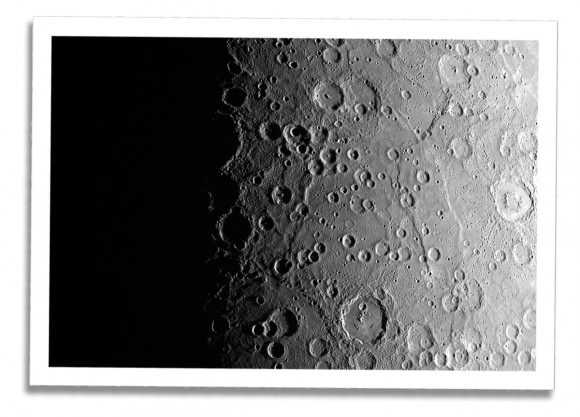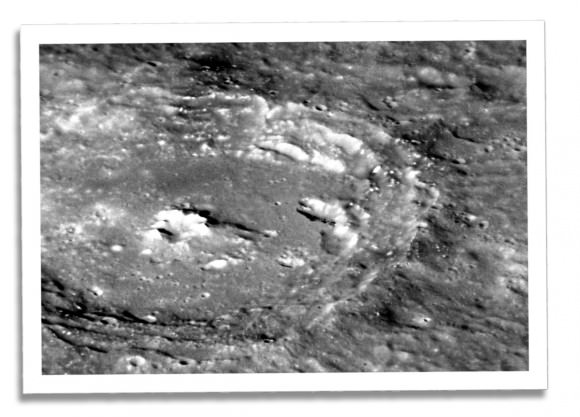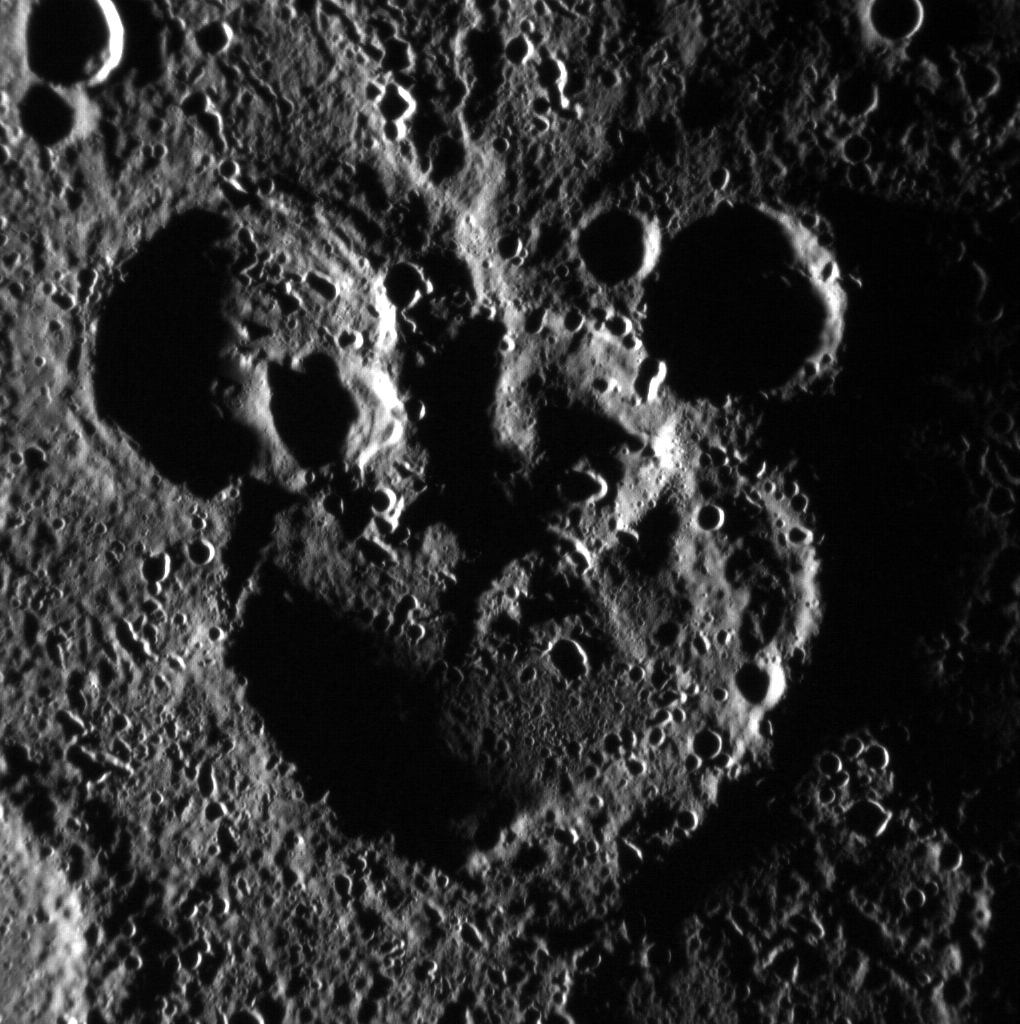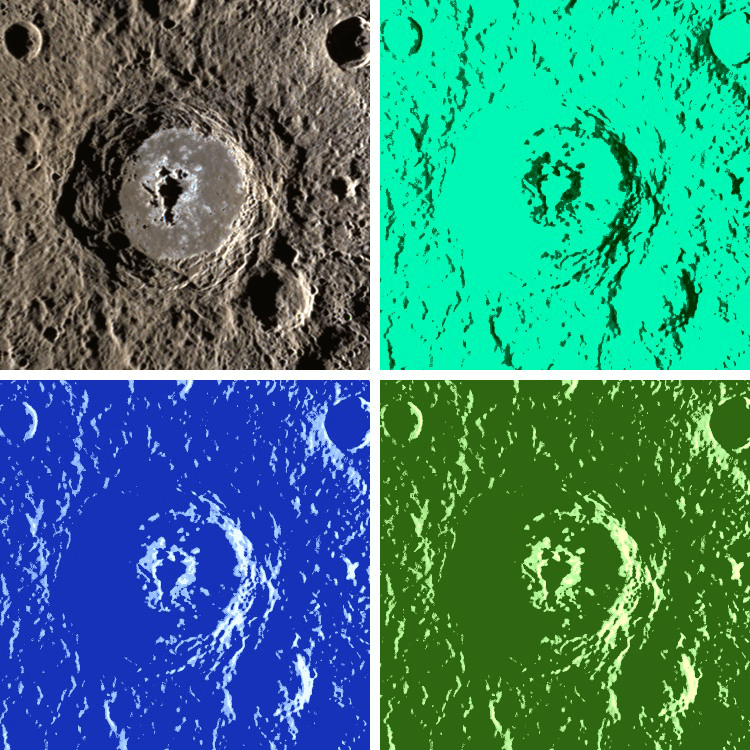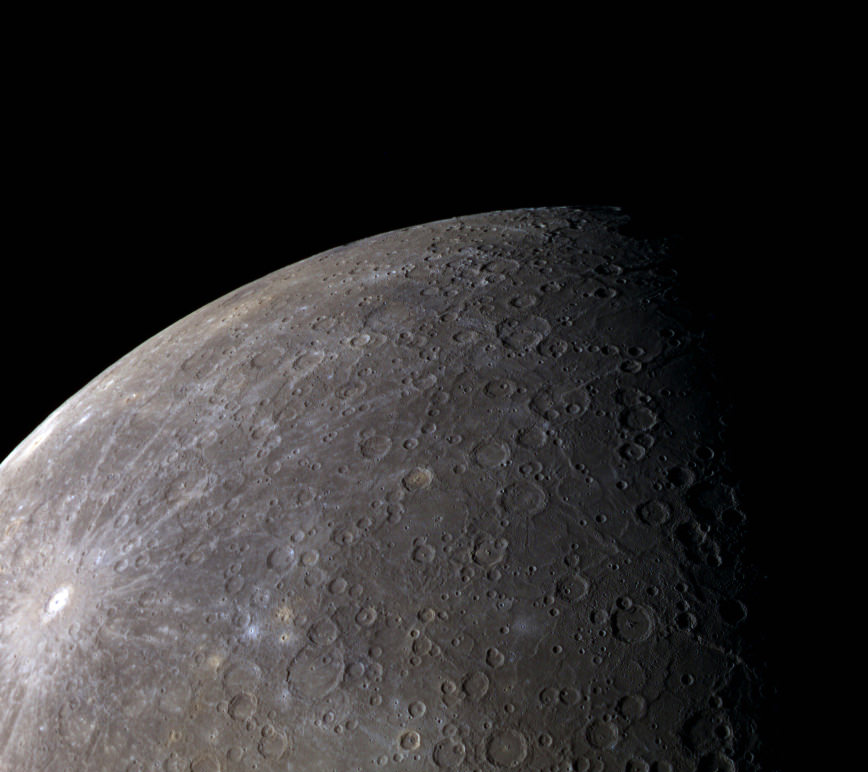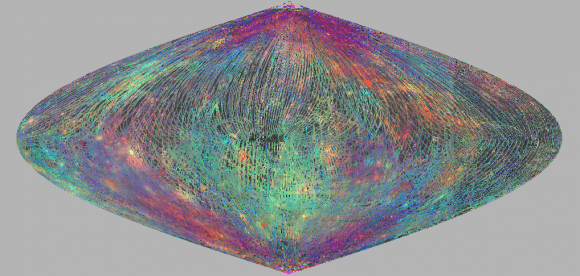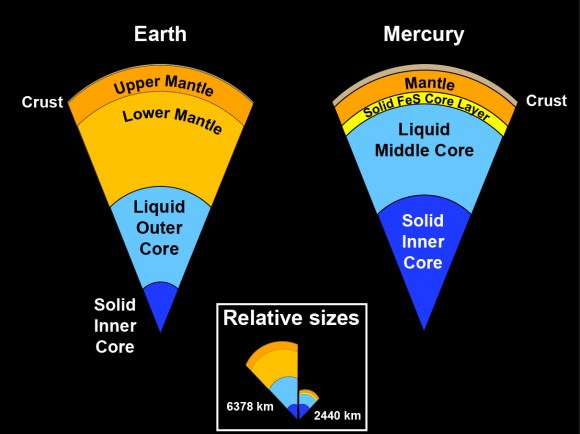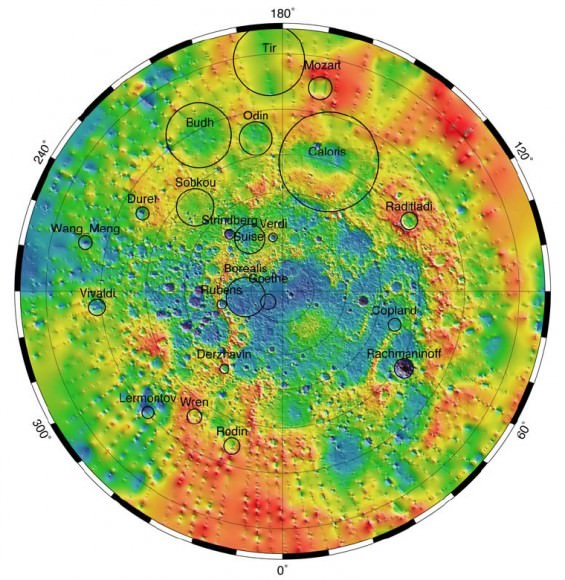A radar image of Mercury’s north polar region is shown superposed on a mosaic of MESSENGER images of the same area. All of the larger polar deposits are located on the floors or walls of impact craters. Deposits farther from the pole are seen to be concentrated on the north-facing sides of craters. Credit: NASA/Johns Hopkins University Applied Physics Laboratory/Carnegie Institution of Washington/National Astronomy and Ionosphere Center, Arecibo Observatory
Over 20 years ago, radar-bright materials were seen in the north polar region on Mercury, and since then scientists have postulated that water ice could be hiding there in permanently shadowed regions. The latest data from the MESSENGER spacecraft – now orbiting the planet closest to the Sun – confirms that Mercury indeed does hold water ice as well as organic material within permanently shadowed craters at its north pole. Scientists today said that Mercury could hold between 100 billion to 1 trillion tons of water ice at both poles, and the ice could be up to 20 meters deep in places. Additionally, intriguing dark material which covers the ice could hold other volatiles such as organics.
The MESSENGER team published three papers this week in the journal Science, which present three new lines of evidence that water ice dominates the components inside the craters on Mercury’s north pole.
“Water ice passed three challenging tests and we know of no other compound that matches the characteristics we have measured with the MESSENGER spacecraft,” said MESSENGER Principal Investigator Sean Solomon at a briefing today. “These findings reveal a very important chapter of the story of how water ice has been delivered to the inner planets by comets and water rich asteroids over time.”
MESSENGER arrived at Mercury last year and data from the spacecraft’s neutron spectrometer and laser altimeter were used to make the observations at the planet’s north pole.
A layer of water ice several meters thick is illustrated in white. Abundant hydrogen atoms within the ice stop the neutrons from escaping into space. A signature of enhanced hydrogen concentrations (and, by inference, water ice) is a decrease in the rate of MESSENGER’s detection of neutrons from the planet. Credit: NASA/Johns Hopkins University Applied Physics Laboratory/Carnegie Institution of Washington
Neutron spectroscopy measures average hydrogen concentrations within Mercury’s radar-bright regions, and scientists were able to derive the water ice concentrations from the hydrogen measurements.
“The neutron data indicate that Mercury’s radar-bright polar deposits contain, on average, a hydrogen-rich layer more than tens of centimeters thick beneath a surficial layer 10 to 20 centimeters thick that is less rich in hydrogen,” said David Lawrence, a MESSENGER Participating Scientist based at the Johns Hopkins University Applied Physics Laboratory and the lead author of one of the papers. “The buried layer has a hydrogen content consistent with nearly pure water ice.”
This image shows sunlight that reaches the Prokofiev crater floor and rim. The north-facing portions of the rim and interior remain in perpetual shadow, as do those of numerous other craters. Click on the image watch a movie which simulates approximately one half of a Mercury solar day (176 Earth days) and uses the digital terrain model derived from MLA measurements. Credit: NASA Goddard Space Flight Center/Massachusetts Institute of Technology/Johns Hopkins University Applied Physics Laboratory/Carnegie Institution of Washington.
Data from MESSENGER’s Mercury Laser Altimeter (MLA) — which has fired more than 10 million laser pulses at Mercury to make detailed maps of the planet’s topography — corroborate the radar results and Neutron Spectrometer measurements of Mercury’s polar region. Gregory Neumann of the NASA Goddard Flight Center, lead author of the second paper said the team used topographic data to develop illumination models for Mercury north polar craters, revealing irregular dark and bright deposits at near-infrared wavelength near Mercury’s north pole.
“The real surprise is that there were dark areas surrounding bright areas that were more pervasive than radar bright areas,” said Neumann at Thursday’s briefing. “They are a blanket that protects the bright volatiles that lie underneath.”
Neumann said that impacts of comets or volatile-rich asteroids could have provided both the dark and bright deposits, a finding corroborated in a third paper led by David Paige of the University of California, Los Angeles.
Paige and his colleagues provided the first detailed models of the surface and near-surface temperatures of Mercury’s north polar regions that utilize the actual topography of Mercury’s surface measured by MLA. The measurements “show that the spatial distribution of regions of high radar backscatter is well matched by the predicted distribution of thermally stable water ice,” he said.
A map of “permafrost” on Mercury showing the calculated depths below the surface at which water ice is predicted to be thermally stable. The grey areas are regions that are too warm at all depths for stable water ice. The colored regions are sufficiently cold for subsurface ice to be stable, and the white regions are sufficiently cold exposed surface ice to be stable. The thermal model results predict the presence of surface and subsurface water ice at the same locations where they are observed by Earth-based radar and MLA observations. Credit: NASA/UCLA/Johns Hopkins University Applied Physics Laboratory/Carnegie Institution of Washington
According to Paige, the dark material is likely a mix of complex organic compounds delivered to Mercury by the impacts of comets and volatile-rich asteroids, the same objects that likely delivered water to the innermost planet. The organic material may have been darkened further by exposure to the harsh radiation at Mercury’s surface, even in permanently shadowed areas.
This dark insulating material is a new and intriguing piece of the story of Mercury that MESSENGER is seeking to unravel, said Solomon, and raises questions about what types of organics could be found there. Solomon added that Mercury may now become an object of interest for astrobiology, but said in no uncertain terms that none of the scientists think there is life on Mercury. This could, however, provide information about the rise of organics on Earth.
Additionally, the scientist said there is zero chance of liquid water on Mercury, even though temperatures in some regions would be conducive to liquid water. But with no atmosphere on Mercury, water wouldn’t stick around for long. “It would be ice or vapor really fast,” said Paige.
This schematic of MESSENGER’s orbit illustrates some of the challenges to acquiring observations of Mercury’s north polar region. Credit: NASA/Johns Hopkins University Applied Physics Laboratory/Carnegie Institution of Washington
Solomon said that obtaining these measurements has not been easy and has not been quick. “Even at highest latitudes reached by MESSENGER, the spacecraft must look at an oblique angle to look at the north polar regions,” he said.
During its primary orbital mission, MESSENGER was in a 12-hour orbit and was at an altitude between 244 and 640 km at the northernmost point in its trajectory. Since April 2012, MESSENGER has been in an 8-hour orbit, shown above, and it has been at an altitude between 311 and 442 km at the northernmost point in its trajectory. Even from these high-latitude vantages, Mercury’s polar deposits fill only a small portion of the field of view of many of MESSENGER’s instruments.
But despite the challenges, Solomon said, the one and a half years of MESSENGER in orbit have now yielded clear results.

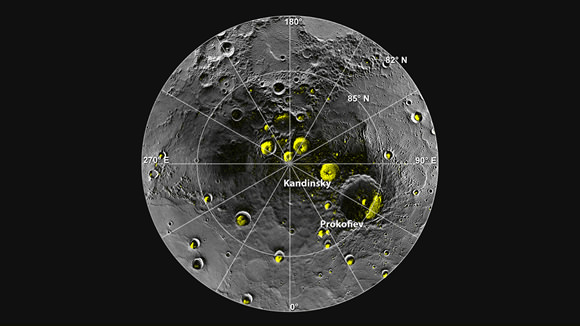
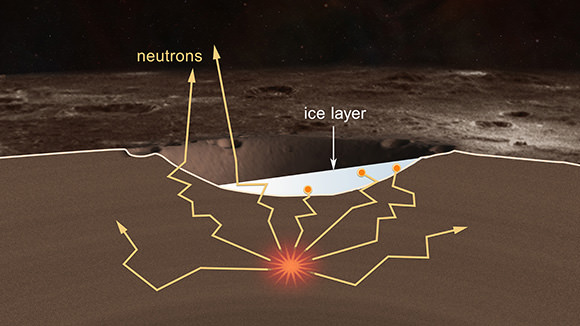
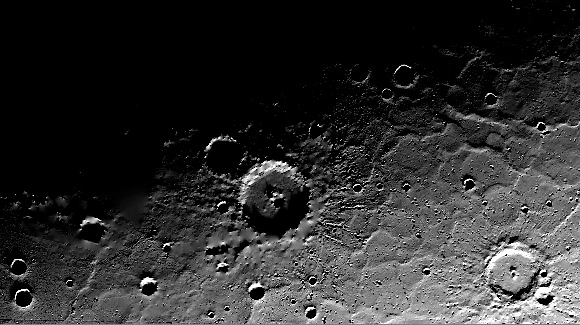
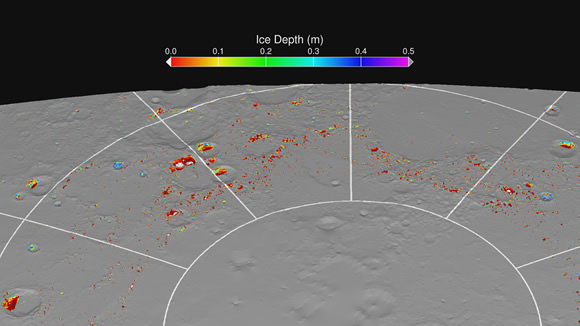
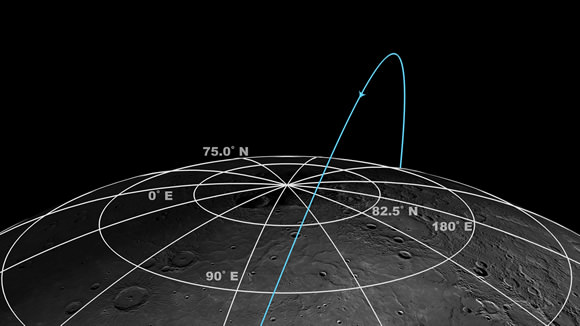
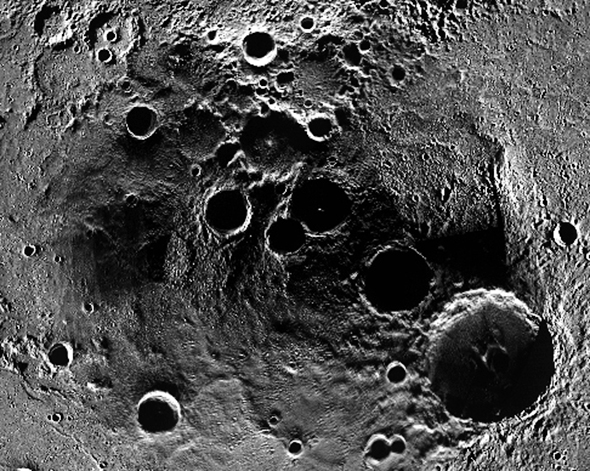

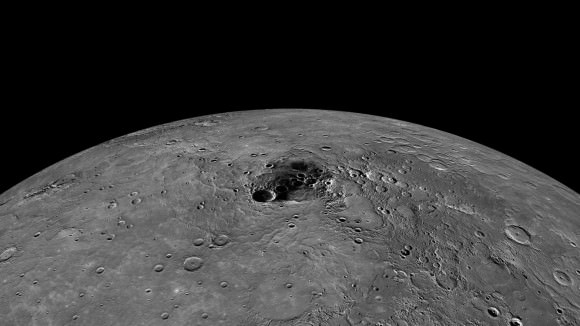

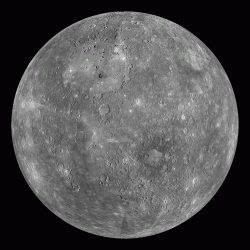
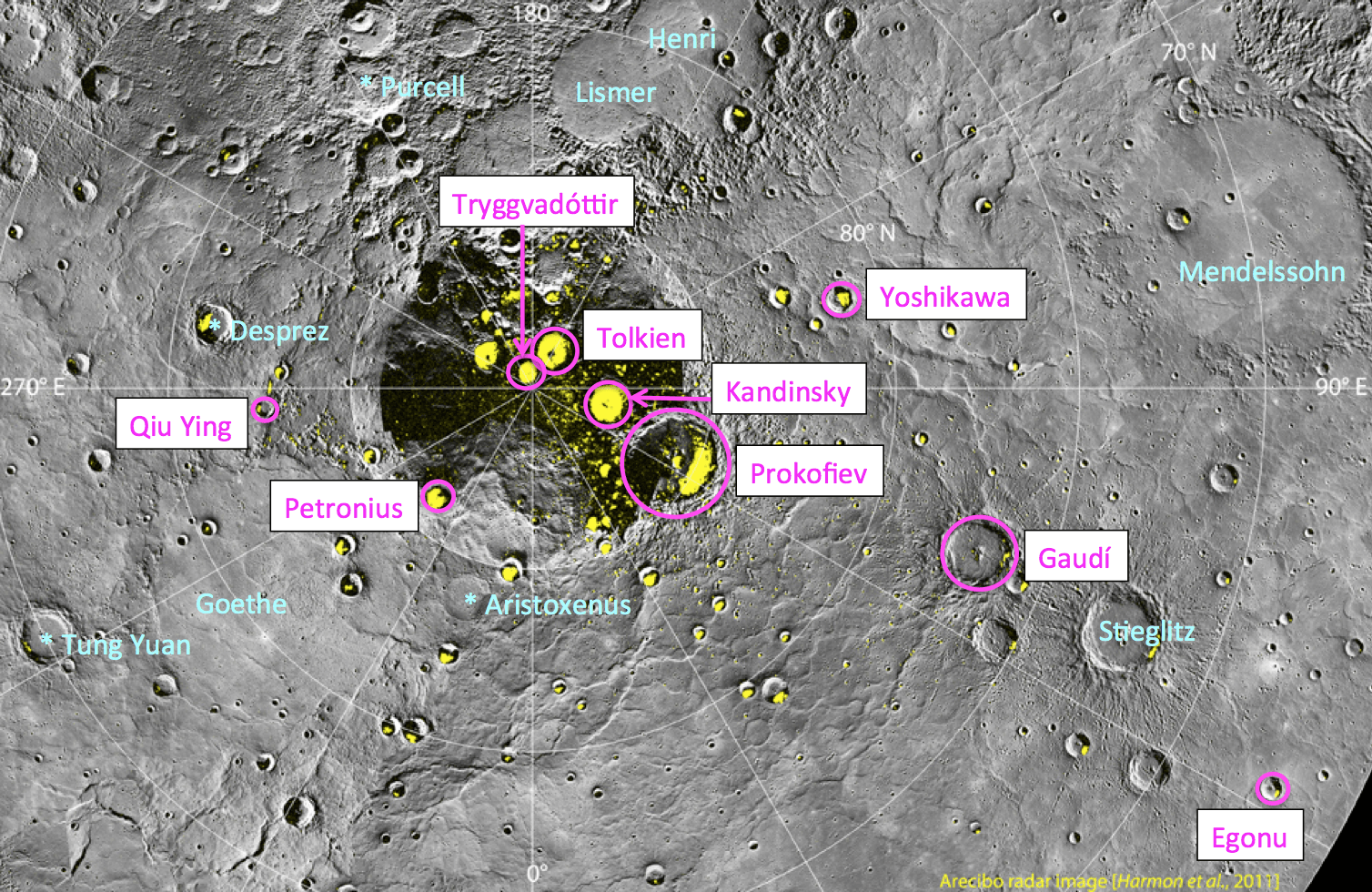
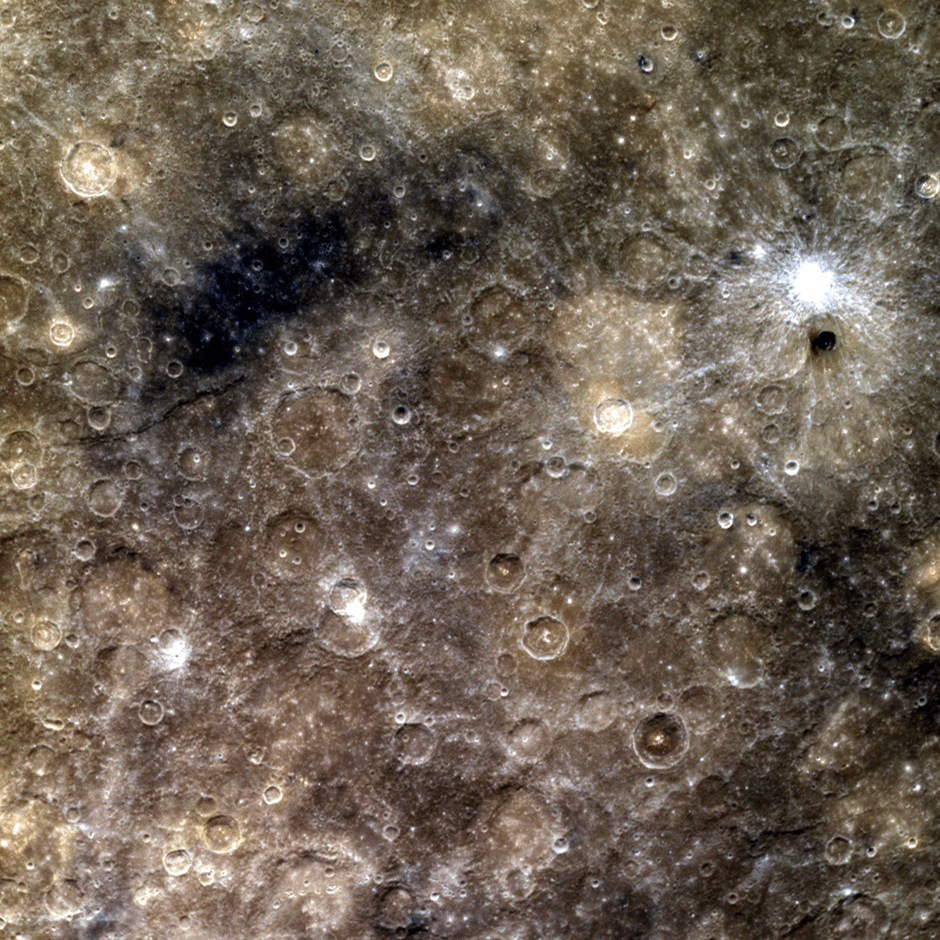
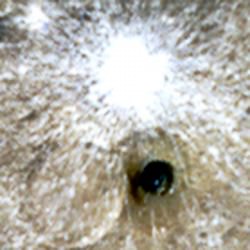 This scene lies between Mercury’s Moody and Amaral craters, spanning an area of about 1200 km (745 miles). The patch of dark blue Low Reflectance Material (LRM) in the upper left of the image and the bright rayed crater on the right make this a diverse view of Mercury’s surface. Note the curious small, dark crater just below the bright rayed crater on the right.
This scene lies between Mercury’s Moody and Amaral craters, spanning an area of about 1200 km (745 miles). The patch of dark blue Low Reflectance Material (LRM) in the upper left of the image and the bright rayed crater on the right make this a diverse view of Mercury’s surface. Note the curious small, dark crater just below the bright rayed crater on the right.